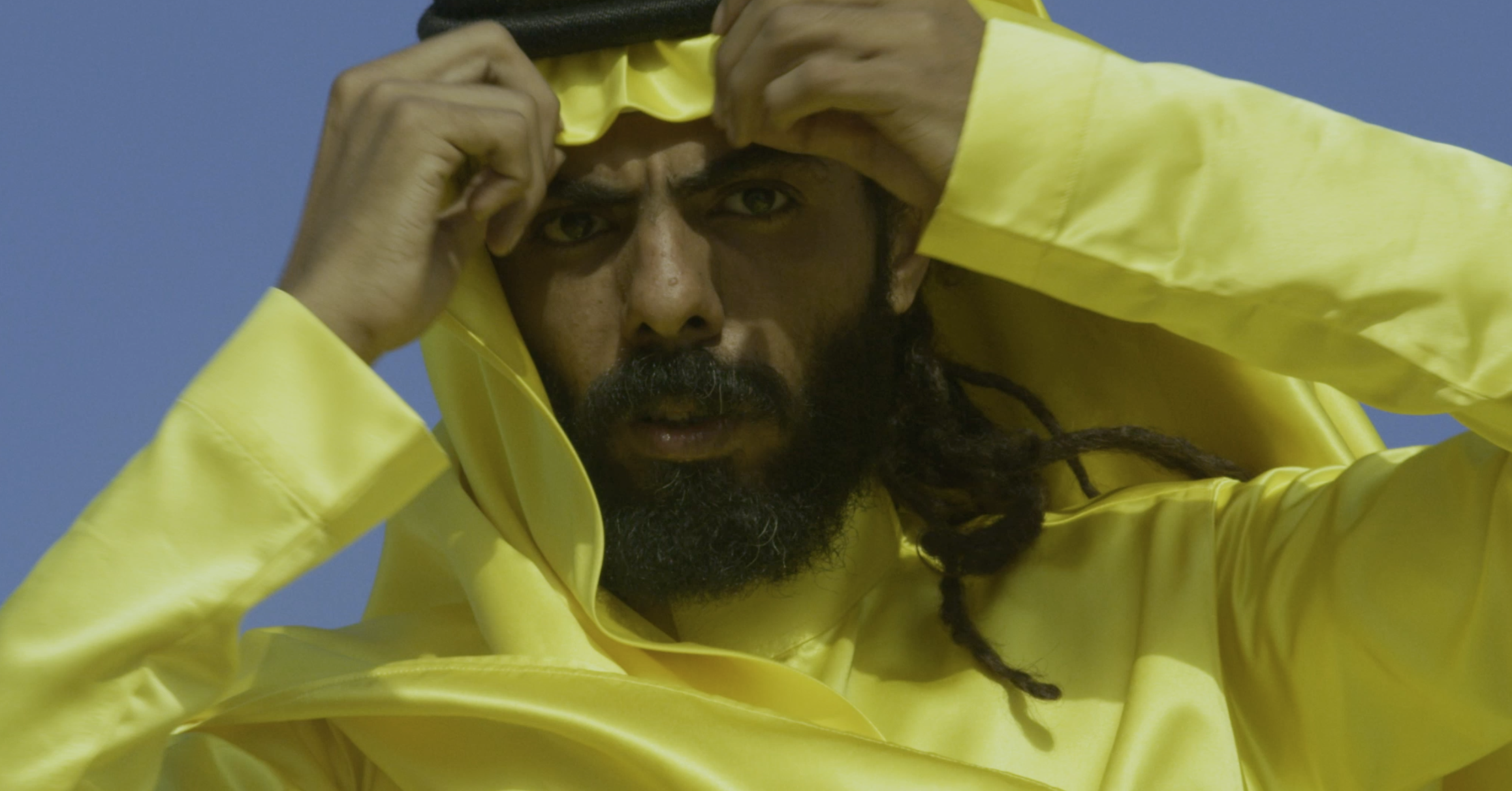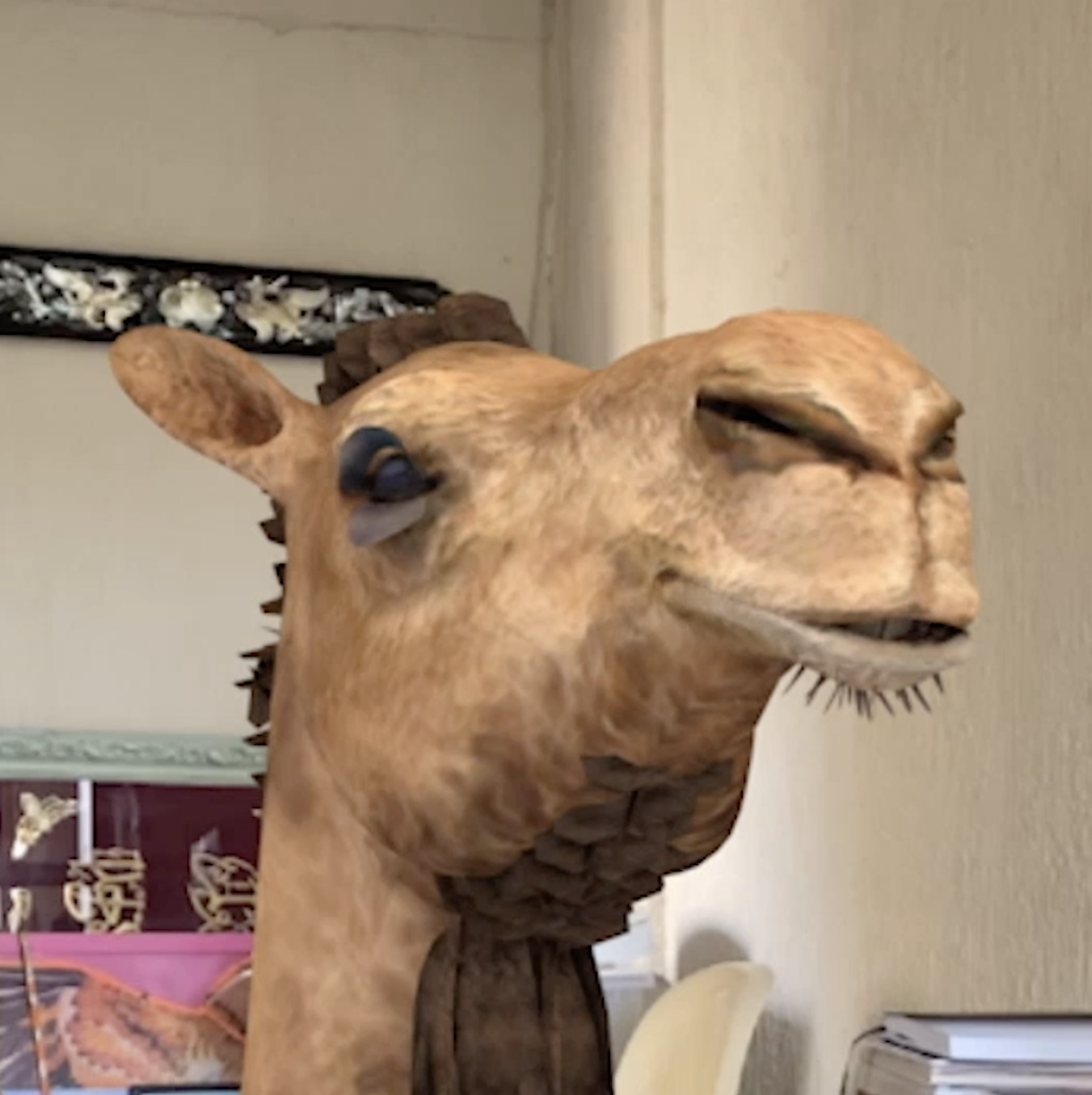Makwah Man
4K video, sound, color, 00:47:16 - 2020
A Study of How Heat is applied
Digital Print, Diptych - 73 x 00 cm - 2020
With the people, you blondie (مع القوم يا شقجرة)
Installation, laundry rack and thobe, unique - 2020
WHAT IS THIS?!
4K video, sound, color, 00:05:00 - 2020
Makwah
Installation, Iron and stand 60 x 40 cm - 2020
Solo Show: Heat Burns
︎ ︎ ︎
4K video, sound, color, 00:47:16 - 2020
A Study of How Heat is applied
Digital Print, Diptych - 73 x 00 cm - 2020
With the people, you blondie (مع القوم يا شقجرة)
Installation, laundry rack and thobe, unique - 2020
WHAT IS THIS?!
4K video, sound, color, 00:05:00 - 2020
Makwah
Installation, Iron and stand 60 x 40 cm - 2020
Solo Show: Heat Burns
︎ ︎ ︎
An aspirational lifestyle has emerged in the Gulf in recent years, one based on tenets of positivity,
efficiency and productivity, manifested in an aggressively optimistic mindset. Its proponents circulate
on social media, TV and YouTube, while a Silicon Valley inspired start-up culture has infiltrated small
businesses, governments and corporations. Positivity and productivity are now the markers of
success and there are considerable top-down efforts to mold members of society into happy, efficient,
productive subjects. But how do you instigate this cultural change for so many people? What are the
implications of applying the same strategies meant for individual positivity and “improvement” to the
mechanisms of a whole population? How is the notion of optimism reconciled with aspects of Arab
culture that are traditionally rooted in an aesthetics of sadness? And to what degree has the belief in
positivity become a popular phenomenon?
Ahaad Alamoudi begins to answer these questions in her latest body of work, Heat Burns, addressing topics of hegemony, technology and power through the lens of the fast paced, societal changes occurring within Saudi Arabia. She witnesses society’s adaptation to these changes, questioning what is lost and gained through this process and observing how society navigates its way through transformation.
Central to the iconography of Heat Burns is the symbol of the iron and the colour yellow, to be precise Pantone: Yellow 102 cp. Al Amoudi sees the iron as a tool for action, embodying the idea of change that comes with heat and pressure. The iron becomes an alchemical tool to sublimate energy, forcefully creating change. Sublimation is the passage from one state to another, and it is heat that affects this passage. When the temperature is below zero, water freezes and becomes solid; if you heat it slightly to 1 degree it melts and becomes liquid again. Heat it more, like an iron can, and it changes into steam.
The Pantone Yellow overwhelms the show, and is seen in the painted walls of the gallery, the multiple yellow thobes and in the central video Iron Man. Yellow has conflicted associations, often used to represent happiness and hope, it is also associated with deceit and irritation. The central work in the show is a two channel video Iron Man. On a large screen a man is depicted endlessly ironing metres of pantone yellow cloth in his pantone yellow satin thobe on top of a dune in the middle of the desert, reciting paternalistic, positive aphorisms. The yellow thobes are repeated in another installation With the people, you blondie where 150 identical thobes are maneuvered by a machine in a seemingly endless loop. With its combination of mass production, mechanical reproduction and traditional craftsmanship it invites us to look more closely at cultural and economic exchange.
Text written by: Amal Khalaf
Makwah man perfromed by: Hani Kadour
Ahaad Alamoudi begins to answer these questions in her latest body of work, Heat Burns, addressing topics of hegemony, technology and power through the lens of the fast paced, societal changes occurring within Saudi Arabia. She witnesses society’s adaptation to these changes, questioning what is lost and gained through this process and observing how society navigates its way through transformation.
Central to the iconography of Heat Burns is the symbol of the iron and the colour yellow, to be precise Pantone: Yellow 102 cp. Al Amoudi sees the iron as a tool for action, embodying the idea of change that comes with heat and pressure. The iron becomes an alchemical tool to sublimate energy, forcefully creating change. Sublimation is the passage from one state to another, and it is heat that affects this passage. When the temperature is below zero, water freezes and becomes solid; if you heat it slightly to 1 degree it melts and becomes liquid again. Heat it more, like an iron can, and it changes into steam.
The Pantone Yellow overwhelms the show, and is seen in the painted walls of the gallery, the multiple yellow thobes and in the central video Iron Man. Yellow has conflicted associations, often used to represent happiness and hope, it is also associated with deceit and irritation. The central work in the show is a two channel video Iron Man. On a large screen a man is depicted endlessly ironing metres of pantone yellow cloth in his pantone yellow satin thobe on top of a dune in the middle of the desert, reciting paternalistic, positive aphorisms. The yellow thobes are repeated in another installation With the people, you blondie where 150 identical thobes are maneuvered by a machine in a seemingly endless loop. With its combination of mass production, mechanical reproduction and traditional craftsmanship it invites us to look more closely at cultural and economic exchange.
Text written by: Amal Khalaf
Makwah man perfromed by: Hani Kadour





























